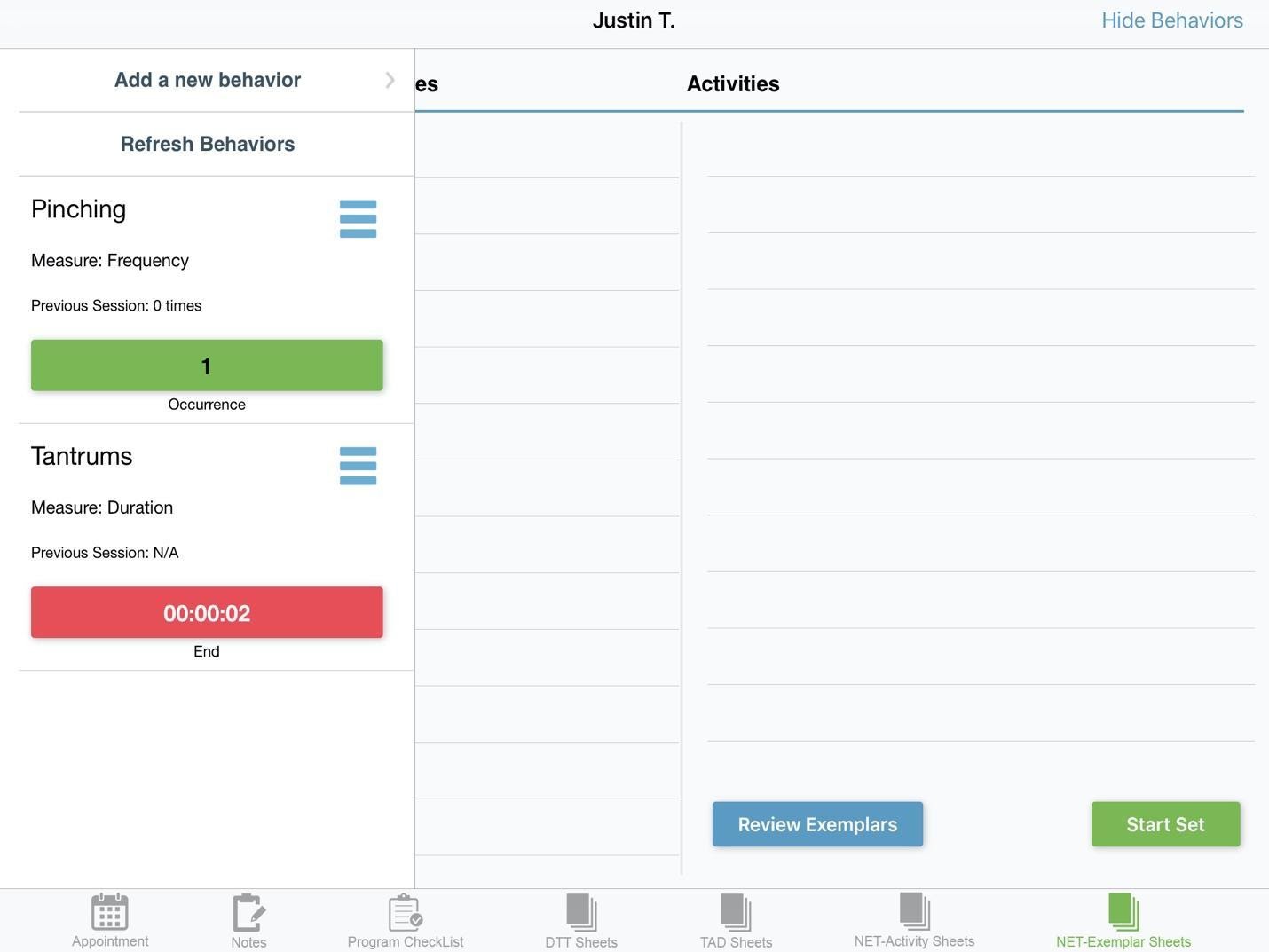Each company has a specific type and style of data collection. Some use paper data sheets, while others have complex computer, iPad, or other technology-based systems for data collection.
Here, you will find some examples of paper data collection sheets. Keep in mind that your BCBA will let you know how to collect the data and what type of data to collect.

In the behavior management data sheet, the problem behavior will be listed in the first column labeled behavior. The next column, labeled "Meas.", is where the type of measurement will be listed, as follows:

This type of data sheet is specifically for interval data. Fill out the top part with the patient’s information. The BCBA will let you know the length of the intervals and the type of interval recording.
In the chart part under intervals, it is recommended that you mark EACH interval, even if the behavior did not occur, so you do not lose your place. Your BCBA will let you know how to mark it, but you might want to put Y for an occurrence and N for no occurrence.

Behavior technicians may also help with functional assessment procedures and ABC data collection. ABC data helps us to identify potential target behaviors along with their antecedents (what happens immediately before the behavior) and consequences (what happens immediately after the behavior).
This type of data sheet is for recording antecedent, behavior, consequence, or ABC data. The behavior itself is written in the middle Behavior column. What happens immediately before the behavior is recorded in the Antecedent column and what happens immediately after the behavior is recorded in the Consequence column.
EXAMPLE
If the teacher asks the student to complete the math worksheet, the student rips the math worksheet into several pieces and throws it in the floor, and the teacher sends the student to the principal’s office, you might record the following on the ABC data sheet:Here, you will find some examples of iPad data collection. Keep in mind that your BCBA will let you know how to collect the data and what type of data to collect.
| Step | Description |
|---|---|
| Home Page |
 For instance, on this system, pinching behavior data are collected using frequency. Each time the behavior occurs, you would tap the green button to add to the total count. Tantrum data is measured using duration. Click on the “Start” button to begin the timer when the tantrum behavior begins. |
| Start Timer |
 This starts the timer. To stop the timer, press the button again. |
| End Timer |
 Click the “End” button to end the timer. |
Many electronic data collection systems also have additional information included, such as the BIP, graphs, notes, etc. Your company and BCBA will train you on all of these specific components as needed for your role and patients.